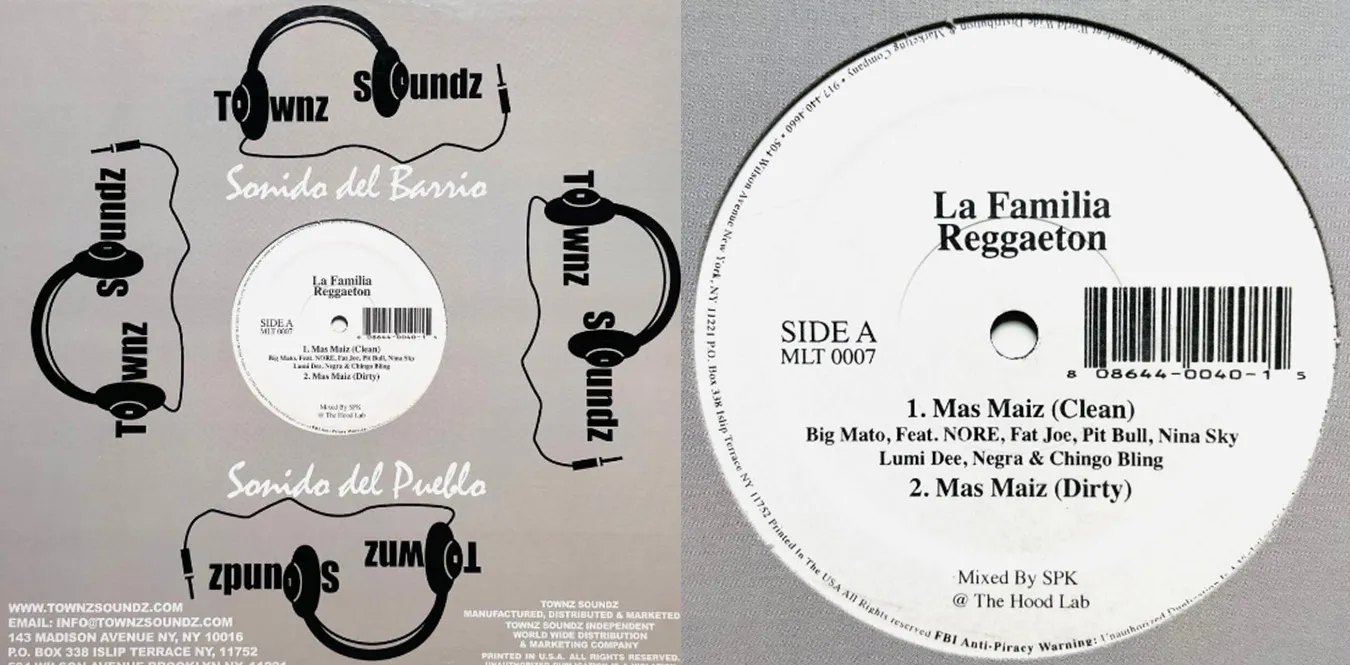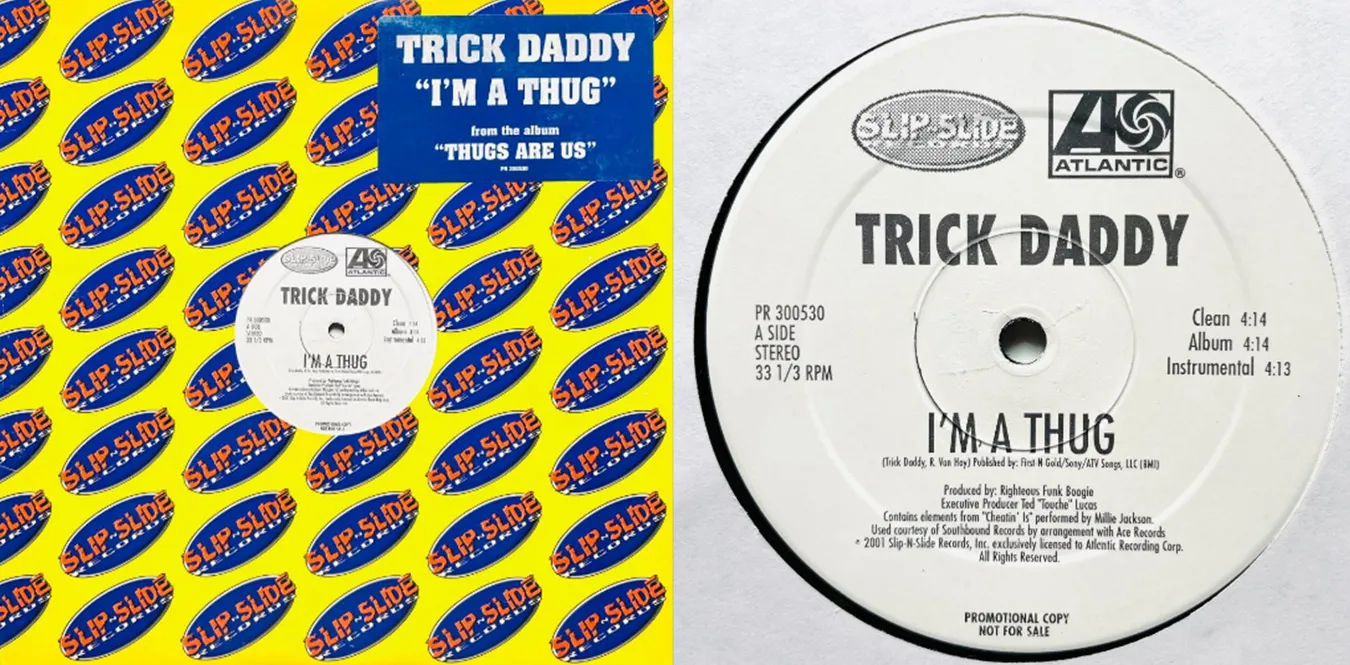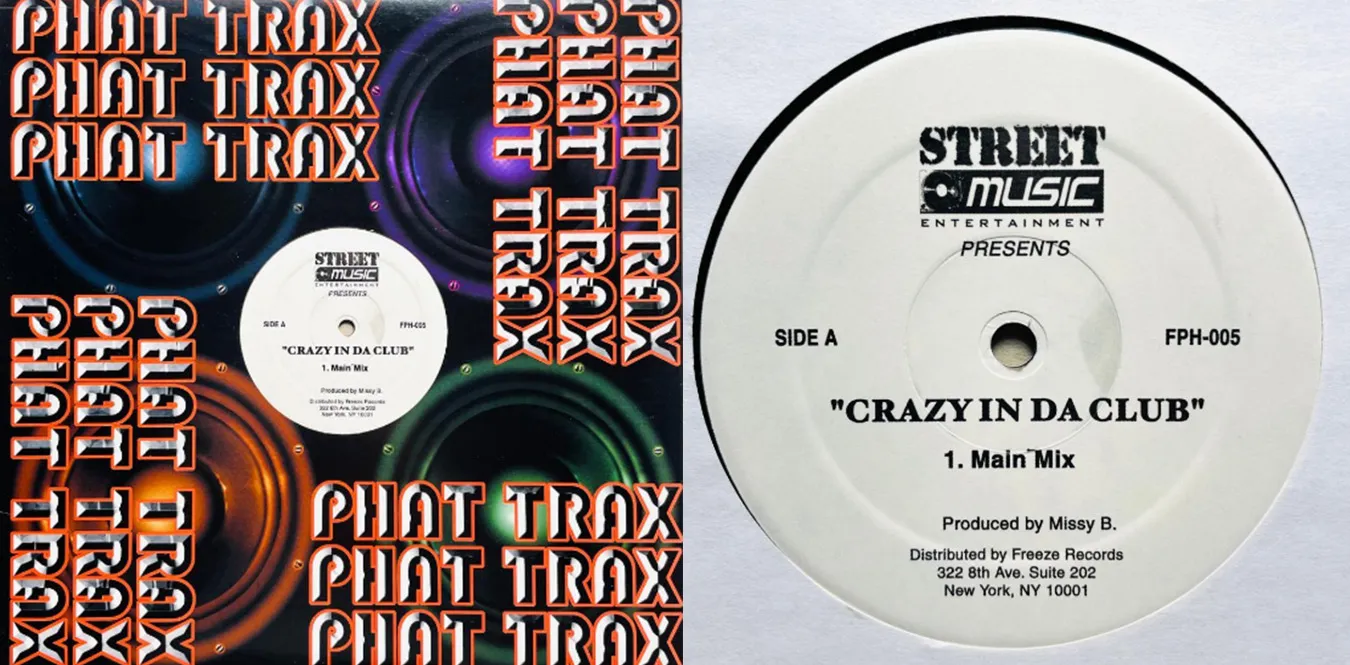[Column] History of US Hip Hop: Overall picture including regions, clubs, media, and equipment
Column en 00s 80s 90s Hiphop![[Column] History of US Hip Hop: Overall picture including regions, clubs, media, and equipment](/../assets/images/column-hiphop-history.webp)
History of American hip-hop: Overall picture including regions, clubs, media, equipment, etc.
Text: mmr|Theme: About hip-hop, where different styles have been formed in each region of the United States
Hip-hop was born in the Bronx, New York in the late 1970s, and has developed into more than just a music genre, it has also become a culture linked to dance, graffiti, fashion, and social movements. In America, different styles were formed in each region, and development was supported by the club scene, radio, demo tapes, and record culture. Additionally, the development of sampling technology and the subsequent trend toward de-sampling symbolized musical innovation in hip-hop.
Late 1970s: The origins of the Bronx and the foundations of club culture
Region/era background
Young people in the Bronx hold DJ parties in abandoned public spaces and community centers. By repeating broken beats, B-Boy/B-Girl dance evolved. Clubs and block parties were more than just music venues; they were a symbol of community unity.
The importance of radio and demo tapes
At the time, hip-hop was popularized through radio programs (e.g. WBLS’s “The Show”), and demo tapes were an important means of discovering artists. DJ Kool Herc and Afrika Bambaataa played their mixtapes on local radio and at parties, helping to spread the word.
Representative masterpiece
The Sugarhill Gang”Rapper’s Delight”(1979)
Grandmaster Flash and the Furious Five “The Message” (1982)
Equipment/Sampling Culture
Introducing the Technics SL-1200 turntable, early MPC model, and drum machine (Roland TR-808). Sampling from records became central to music production, and DJs established a method of repeating the “break” parts of records.
1980s: East Coast Golden Age and West Coast Rise
East Coast (New York)
Public Enemy and Eric B. & Rakim appeared, and rap with political and social messages was born. The club also served as a place to try out new beats.
West Coast (California)
Gangsta rap develops. N.W.A. and Ice-T appear, depicting the street reality of Compton and Los Angeles. A unique G-funk style was honed in the clubs and rolling parties of the West Coast.
Role of demo tapes and radio
The new song was aired on local radio stations (KDAY, KMEL), and young people who listened to the demo tape spread it by word of mouth. In particular, local radio DJs acted as referees of the scene.
Representative masterpiece
Run-D.M.C. “Raising Hell” (1986)
Public Enemy “It Takes a Nation of Millions to Hold Us Back” (1988)
N.W.A. “Straight Outta Compton” (1988)
Sampling culture
Extract phrases from soul, funk, and jazz records using a sampler (Akai MPC60/SP-1200). Record culture was at the core of production, and DJs’ knowledge of records was directly linked to their technical ability.
1990s: East-West conflict, the rise of the South, clubs and record culture
East Coast vs West Coast
Regional tensions influence music, as exemplified by the conflict between The Notorious B.I.G. and 2Pac. New York clubs (Tunnel, Limelight) became places for rap battles and the premiere of new releases, fostering a rap battle culture.
South (Atlanta, Houston, New Orleans)
OutKast and UGK emerged and established their own unique sound. Tape distribution in clubs supported the spread of regional hip-hop.
Movement towards desampling
Due to copyright issues and rising costs, an increasing number of artists are turning to original sound source production and live performance. Dr. Dre’s ““The Chronic’’ (1992) skillfully uses sampling, while G-funk uses a lot of synths and original bass lines.
Representative masterpiece
East Coast: The Notorious B.I.G. “Ready to Die” (1994)
West Coast: 2Pac “All Eyez on Me” (1996)
South: OutKast”ATLiens”(1996)
2000s: Digitalization and diversification of the club scene
Club culture
DJ sets evolved at clubs in New York and LA. In an era before radio and streaming, songs became a buzz on club floors. Before demo tapes and the Internet, rap battles were centered around clubs.
De-sampling and equipment changes With the spread of DAWs (Pro Tools, Ableton Live), it is now possible to create unique sound sources using synths and plug-ins without relying on sampling. This increases the proportion of original beats.
Representative masterpiece
OutKast”Speakerboxxx/The Love Below”(2003)
2010s-Present: Streaming Era and Globalization
Combining club and online culture
Mainly released digitally on SoundCloud, YouTube, Spotify, etc. The club immediately changed its role as a place to see reactions. Battle Rap and Freestyle are distributed online and are appreciated beyond regional differences.
Equipment/production environment
Software synth (Serum, Omnisphere)
DAW (Ableton Live, FL Studio)
Expanding the use of plugins and sample packs
Representative masterpiece
Kendrick Lamar “good kid, m.A.A.d city” (2012)
Combined influence of region, club, media, and production methods
East Coast: Breakbeat, social rap, record sampling culture
West Coast: Gangsta rap, G-funk, rolling parties in the clubs
Southern part: Trap, tape distribution, unique sense of rhythm
Clubs and radio: A place for dissemination and dissemination, a hotbed of freestyle culture
Sampling → De-sampling: Evolution to original production due to copyright issues and technological innovations
Hip-hop is a culture that has evolved through a close intertwining of regions, clubs, media, and equipment, and is expected to continue to expand with new technology.
Specific example of sampling copyright litigation
-
Grand Upright Music v. Biz Markie (1991) Gilbert O”Sullivan”s “Alone Again” unauthorized sampling lawsuit. Since then, it has been clarified that samples without permission are illegal.
-
Bridgeport Music v. Dimension Films (2005) An incident involving unauthorized use of Funkadelic’s guitar loop. It has become a legal precedent that the use of samples without permission, even for one second, is prohibited.
-
The Turtles v. De La Soul (1989~Settlement) Unauthorized sample in “Transmitting Live from Mars”. Since then, De La Soul has been difficult to distribute digitally for many years.
Role of mixtape culture
- Mixtapes by DJ Clue, DJ Drama, DJ Screw and others became a bridge from the underground to the mainstream in the 90s and beyond.
- Southern (Houston, ATL) ““Screw Tape” and ““Gangsta Grillz” formed the scene, making it possible to discover artists independent of labels.
- In the 2000s, Mixtape moved to “SoundCloud” and “DatPiff” and evolved into a means of promotion in the Internet era.
Different eras and sampling trends
| Years | Masterpieces | Sampling trends |
|---|---|---|
| 1980s | Paid in Full, It Takes a Nation of Millions | James Brown, Funk, Soul Sampling Abuse Period |
| 1990s | The Chronic, All Eyez on Me | Parliament-Funkadelic, G-Funk |
| 2000s | Stakonia, Tha Carter III | Reduced sampling/synth mainstream |
| 2010s | DS2, My Beautiful Dark Twisted Fantasy | Sampling reduction/homemade beat + Auto-Tune |
| 2020s | Mr. Morale & The Big Steppers, The Off-Season | Sample regression + AI generated beat experiment |
List of representative clubs/radio stations
| Region | Club | Radio Station |
|---|---|---|
| East (NYC) | Paradise Garage, Tunnel, Latin Quarter | WBLS, KISS FM |
| West (LA) | The Good Life Cafe, Club Unity, Echoplex | KKBT (The Beat), Power 106 |
| South (ATL, Houston, Miami) | Magic City, Fifth Ward Block Parties, Club Rolex | Hot 107.9, SwishaHouse Radio, 99 Jamz |
| Midwest (Chicago, Detroit, KC) | The Mid, Detroit Basement Parties, Blue Room (KC) | WGCI (Chicago), WJLB (Detroit), Hot 103 Jamz (KC) |
Representative equipment list by age group
| Year | Main equipment |
|---|---|
| 1980s | SP-1200, Technics SL-1200, Roland TR-808 |
| 1990s | Akai MPC60/3000, Roland TR-909, Ensoniq ASR-10 |
| 2000s | Korg Triton, Roland Fantom, Pro Tools, TR-808 |
| 2010s | FL Studio, Ableton Live, Auto-Tune, Maschine |
| 2020s | Serato DJ, Ableton Push, Native Instruments Maschine+, AI beat generation tool |
Changes in power distribution by age group
| Age | Power Center | Characteristics |
|---|---|---|
| 1980s | East (centered in NYC) | Golden age of sampling, emphasis on lyricism |
| 1990s | West (LA, Bay) | G-Funk at its peak, 2Pac vs. Biggie |
| 2000s | South (ATL, Houston, Miami) | Trap eve, Crunk, and the rise of Screwstyle |
| 2010s | Trap (South) + Midwest (Chicago Drill, Kanye, Detroit beat) | Sampling reduction + FL Studio spread |
| 2020s | Multipolarization (East, West, South, Midwest) | AI Beat, Sample Regression, Internet Decentralized Culture |
Visualization diagram
Genealogy of major artists
The genealogy chart shows a “lineage” branching out from its origins in NYC to the West, South, and Midwest. Jay-Z and Nas inherited the East Coast lineage, and Dr. Dre’s lineage extends to the West and Midwest.
Changes in power distribution by age group
East Coast
Dominance"] W["1990s
West Coast
G-Funk Heyday"] S["2000s
South
Crunk / Trap Eve"] M["2010s
Trap
+ Rise of Midwest Drill"] P["2020s
Multipolarization:
East + West + South + Midwest"] E --> W --> S --> M --> P
Waveform comparison of typical hip-hop beats
Although it is text-based, it is expressed with pseudo waveforms that are conscious of sine waves and square waves. You can visually understand the evolution of rhythm in hip-hop.
1980s (early days: drum machines and samplers)
| Representative equipment | Waveform image |
|---|---|
| -Roland TR-808 - Oberheim DMX - E-mu SP-12 |
Kick : ▂▄▆█▇▅▄▂
Snare: ▃▃▅▅██▅▃
HiHat: - - - - - - - -
Clap : ░░██░░
Bass: ▂▄▅▄▂
|
1990s (Golden Age: Sampling and Boom Bap/G-Funk)
| Representative equipment | Waveform image |
|---|---|
| - Akai MPC60 -Akai MPC3000 - E-mu SP-1200 -Roland TR-909 |
Kick : █▄█▄█▄█
Snare: ▄▄▄██▄▄▄
HiHat: -x-x-x-x-
Clap : ░█░░█░
Bass: ▂▄▆█▇▆▄▂
|
2000s (digitalization/club focus)
| Representative equipment | Waveform image |
|---|---|
| -Akai MPC2000XL -Pro Tools - Korg Triton |
Kick : ███▄████
Snare: ▄▄▄▄████▄▄
HiHat: - - x - - x -
Clap : ░██░░██░
Bass : ▂▂▄▆██▆▄▂
|
2010s (Trap era/sub bass and high speed HiHat)
| Representative equipment | Waveform image |
|---|---|
| - FL Studio - Roland TR-808 (soft sound source) - Ableton Live |
Kick : ██████▄██████
Snare: ▄▄██▄▄
HiHat: -x-x-x-x-x-x-x-
Clap : ░░██░░██░░
Bass: ▂▄▆█▇▇█▆▄▂
|
2020s (diversification/crossing genres)
| Representative equipment | Waveform image |
|---|---|
| - Ableton Live 11 -Logic Pro -Soft-synth (Serum, Massive, Omnisphere) |
Kick : ████████▄▄███
Snare: ▄▄██▄▄██▄▄
HiHat: -x-xx-xx-x-x-
Clap : ░██░██░██░
Bass: ▂▄▇█▇█▇█▄▂
|
Additional considerations
Genealogy diagrams allow students to intuitively understand ““master-pupil relationships” and ““influence relationships.”
Waveform comparison allows you to visually capture musical evolution.
The map of power visualizes which region the center of the scene has shifted to in each era.
Conclusion
Hip-hop has evolved to reflect the culture and social background of each region. The East Coast, West Coast, and South each have their own unique styles, which have influenced not only music, but also fashion, language, and social movements. Hip-hop will continue to evolve as new techniques and expression methods emerge.
Related columns
🔗 [Column] Overview of West Coast Hip Hop — From its origins to the underground
🔗 [Column] East Coast Hip Hop History — From the Bronx to Brooklyn and around the world

![[Column] Neo-Krautrock: Modern reinterpretation of classic Krautrock](/../assets/images/column-neo-krautrock.webp)
![[Column] UK Broken Beat re-evaluation trend — innovative trends in club music](/../assets/images/column-uk-broken-beat.webp)


![[Column] Dego & Kaidi and Sound Signature](/../assets/images/column-dego-kaidi-so-we-gwarn.webp)
![[Column] Brenda Fassie — The township diva: A journey of glory and struggle](/../assets/images/column-brenda-fassie.webp)
![[Column] Complete history of French hip-hop: from NTM to the present day](/../assets/images/column-french-hiphop.webp)


![[Column] Len Faki's deep analysis of techno: From Berlin to the world](/../assets/images/column-len-faki.webp)